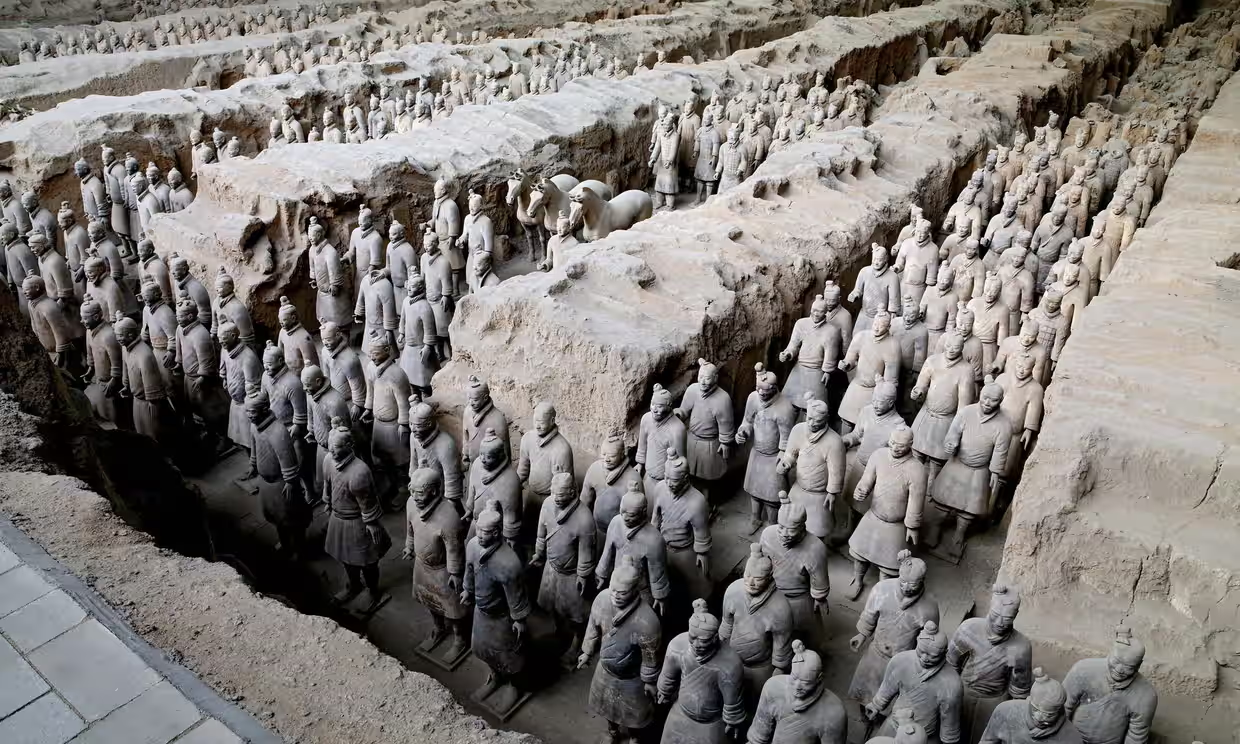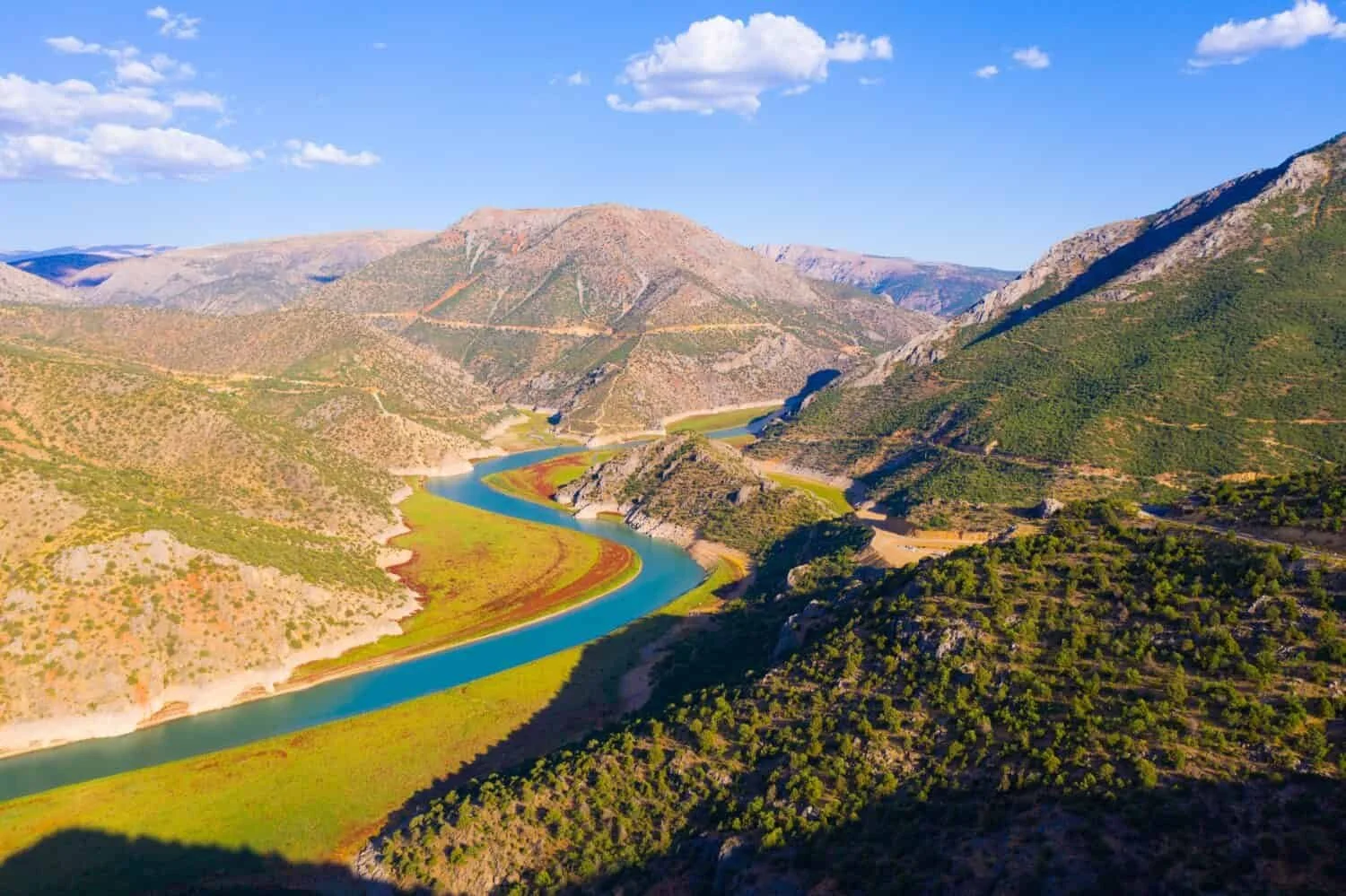Leading palaeontologists and archaeologists in Britain are warning that one of the country's most important palaeolithic sites is in danger because there is not enough law to safeguard it.
Fearing that important evidence at a site in the Cotswolds would be permanently lost to the UK, they are seeking for amendments to the law.
The discovery of ice era mammoths there in a remarkable condition of preservation in 2021 excited Sir David Attenborough and other specialists.
At Cerney Wick, close to Swindon, extensive remains of at least one juvenile, two young adults, and six fully mature adults, which roamed 200,000 years ago, were discovered with weapons used by Neanderthals, who most likely hunted these massive monsters.
Since only a small portion of the huge site, a gravel quarry, had been investigated, much more was anticipated to be discovered during additional digs.
The top experts from universities and national museums were getting ready to return and had even applied for the requisite grants when they discovered that the quarry owner had barred them.
DigVentures, a group of archaeologists that offers possibilities for the public to participate in excavations, excavated the site in 2021 and worked with top authorities to coordinate the study and research.
At the time, co-founder Lisa Westcott Wilkins commended Hills Quarry Products, the owners of the quarry, for giving them as much time as they required. The business also stated: "We will continue to support future investigations."
The Observer has now seen a letter from Hills Quarry Products dated July 18 2023 informing DigVentures that access to the site "will no longer be available" and that they are "formally requesting" the return of finds.
It was eventually impossible for Westcott Wilkins' organisation to stop the site from being excavated, she told the Observer, adding that "better protection for these sites is paramount."
She lamented the possibility that future discoveries could be destroyed in the absence of legislation that would forbid it. Since export licenses do not apply to bones unless they have been altered by human hands or are obviously cultural artefacts, it would be challenging to execute them in this situation. Five tusks, among other potential finds, are already visible among the layers, according to her.
The request to return the already discovered artifacts is met with skepticism by the participating archaeologists. The remainder is in conservation, with one tusk on exhibit in the Bristol Museum. Building a public outreach facility to display the remainder of the collection had also been discussed.
The United Arab Emirates (UAE) may be connected to the most recent developments, according to sources in the archaeological world who spoke to the Observer. The UAE may be seeking to acquire more mammoth remains and Jurassic fossils for the new Natural History Museum Abu Dhabi. The UAE has been buying exhibits, including spending $31.8 million on a Tyrannosaurus rex skeleton in 2022.
The UAE Department of Culture and Tourism was contacted by The Observer for comment. Hills Quarry Products, the site's owner, declined a request for comment.
The flooded quarry may have been emptied in advance of what some archaeologists worry will be a hurried search for treasures, according to a drone photo taken last Sunday.
We have five significant universities as a part of our research partnership because the location is so complicated and challenging, according to Wilkins Westcott. You need that level of skill to properly handle this.
When a stone hand axe from a Neanderthal first surfaced, DigVentures was contacted to take the helm of the first thorough examination of the location. Sally and Neville Hollingsworth, two amateur fossil hunters, made the initial discovery of the mammoth bones.
Prof. Ben Garrod, an evolutionary biologist, referred to the location as "one of the most important discoveries in British palaentology" in 2021. Other ice-age giants' remains, including those of bison, elks, and bears, as well as fossilized seeds, pollen, and plants, including some that are extinct, were also found during the excavations. These discoveries could reveal a lot about the environment at the time as well as how our Neanderthal ancestors lived during a prehistoric period about which little is known.
Attenborough and the Mammoth Graveyard, a BBC One documentary that included Sir David and Garrod filming the excavation alongside archaeologists, detailed the remarkable discovery. Millions of people watched the program internationally.
Garrod stated this weekend to the Observer that it takes a long-term, collaborative effort involving numerous stakeholders, driven by expert knowledge and experience, to fully understand the context when looking at something so complex, where finds range from the microscopic to, quite literally, mammoth in size.
"To lose a site like this now, just as it's starting to reveal its secrets, would be devastating — not just for understanding what happened there 25,000 years ago, but also for determining how climate change will affect our environment in the present and the future."
Prof. Adrian Lister, a palaeobiologist at the Natural History Museum in London and the foremost mammoth expert in the UK, stated that the site might show the last phases of the evolution of the woolly mammoth, one of the most famous ice age creatures. We require a carefully monitored excavation and the preservation of the remains on site for future research.
No further digging would be governed by Historic England, one of the organizations that provided money for the initial excavation. "Historic England's role is to protect our built heritage, which also includes archaeological sites," said Mel Barge, its inspector of ancient monuments in the south-west. According to what we currently understand, these remnants are not protected as scheduled monuments because there is no structure there or undeniable proof that human activity shaped them.
The issue is that it takes primary legislation and we just never reach the point of being a substantial priority for government with limited parliamentary time, according to archaeologist and former director of the Council for British Archaeology Mike Heyworth. The value of Cerney Wick is seriously threatened by this.
































